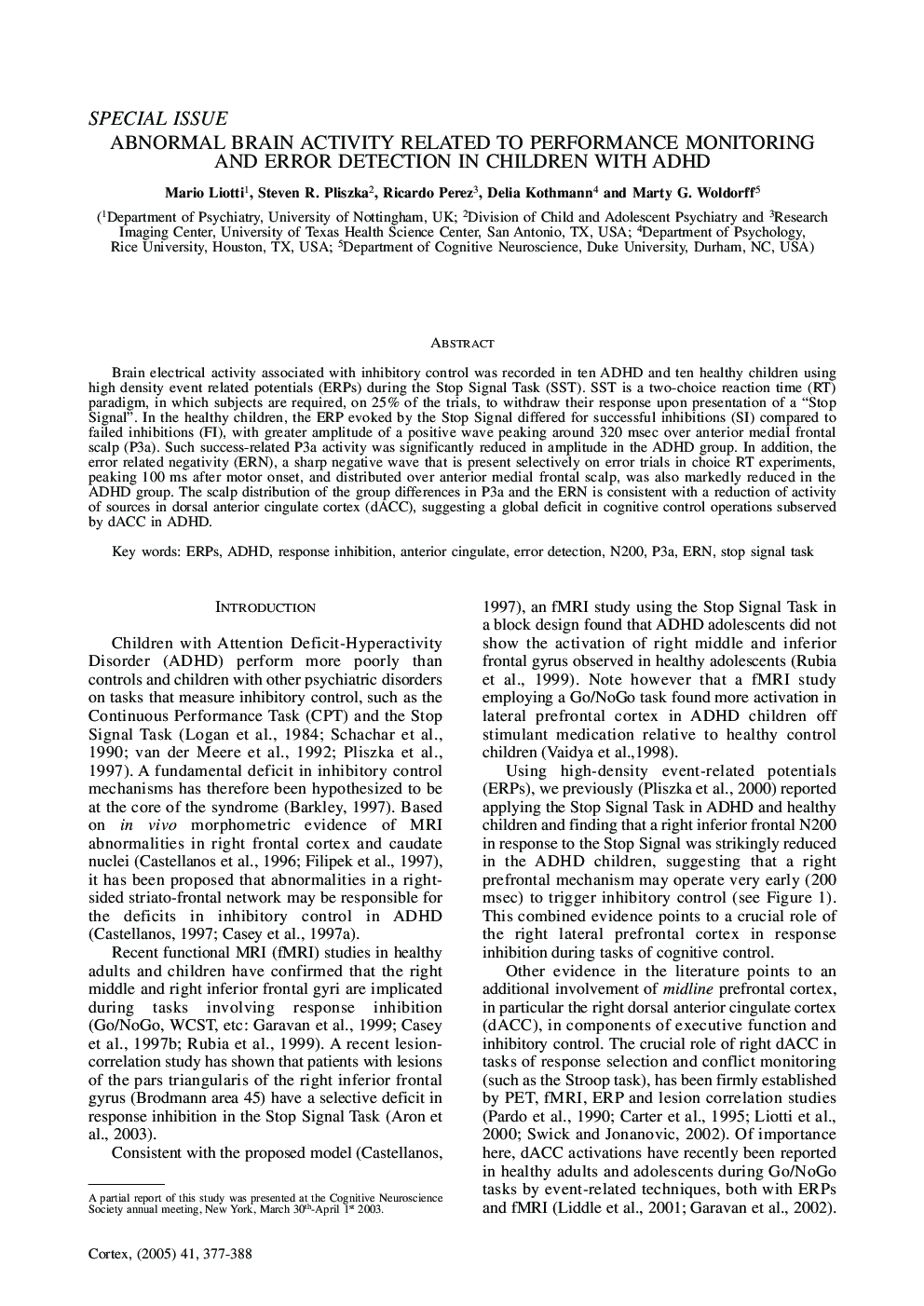| Article ID | Journal | Published Year | Pages | File Type |
|---|---|---|---|---|
| 10463760 | Cortex | 2005 | 12 Pages |
Abstract
Brain electrical activity associated with inhibitory control was recorded in ten ADHD and ten healthy children using high density event related potentials (ERPs) during the Stop Signal Task (SST). SST is a two-choice reaction time (RT) paradigm, in which subjects are required, on 25% of the trials, to withdraw their response upon presentation of a “Stop Signal”. In the healthy children, the ERP evoked by the Stop Signal differed for successful inhibitions (SI) compared to failed inhibitions (FI), with greater amplitude of a positive wave peaking around 320 msec over anterior medial frontal scalp (P3a). Such success-related P3a activity was significantly reduced in amplitude in the ADHD group. In addition, the error related negativity (ERN), a sharp negative wave that is present selectively on error trials in choice RT experiments, peaking 100 ms after motor onset, and distributed over anterior medial frontal scalp, was also markedly reduced in the ADHD group. The scalp distribution of the group differences in P3a and the ERN is consistent with a reduction of activity of sources in dorsal anterior cingulate cortex (dACC), suggesting a global deficit in cognitive control operations subserved by dACC in ADHD.
Related Topics
Life Sciences
Neuroscience
Behavioral Neuroscience
Authors
Mario Liotti, Steven R. Pliszka, Ricardo Perez, Delia Kothmann, Marty G. Woldorff,
